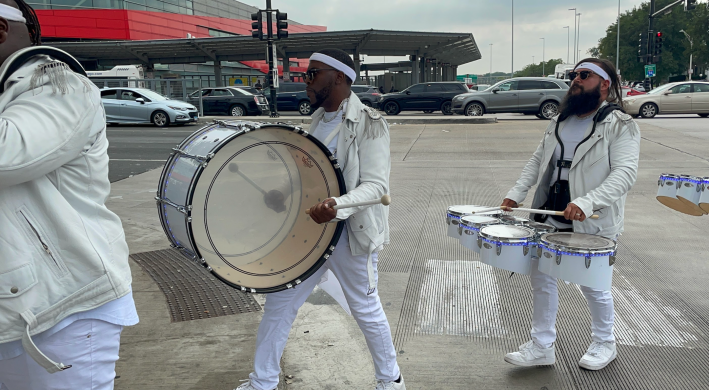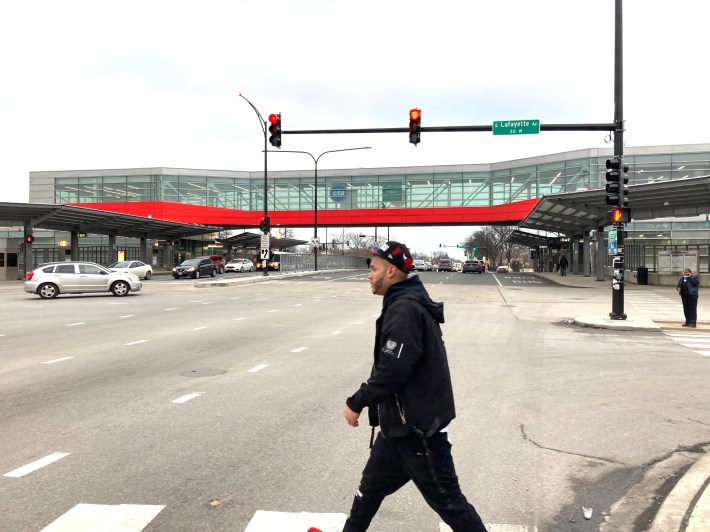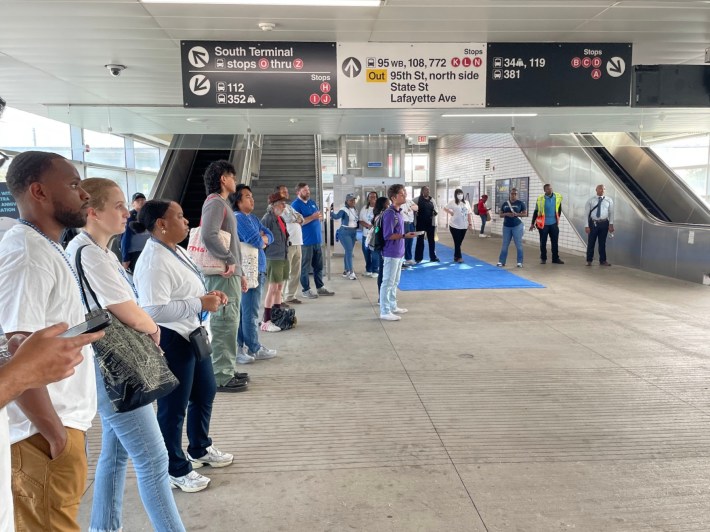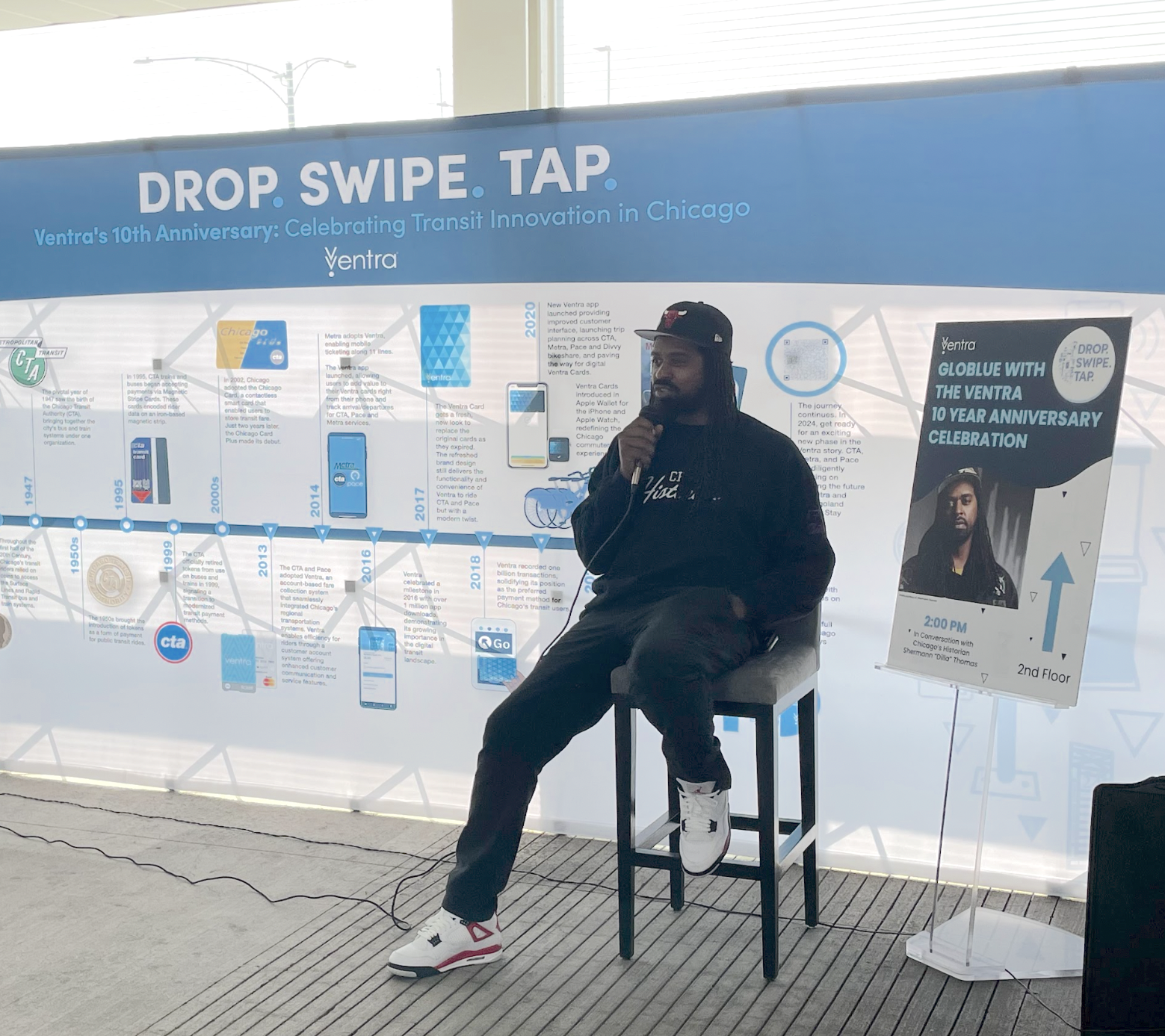
Ventra, the electronic fare payment system that is currently valid on the CTA, Metra, and Pace, was launched 10 years ago in 2013, the same year that Streetsblog Chicago debuted. According to the Regional Transportation Authority, which oversees the three transit systems, Ventra has had "10 million taps" since then.

Last Friday afternoon, September 29, Ventra celebrated its tenth anniversary with the GloBlue event, featuring music, dance, and more in the 95th/Dan Ryan CTA Red Line station's North Terminal. There were performances by The Pack Drumline and a DJ set by DJ Ayana Contreras, plus a line dance session with youth from The Happiness Club. There was also a place where you could write down your favorite transit memory as part of "an interactive arts experience."
"We picked 95th Street because we wanted a great location," said Molly Poppe, the CTA's chief innovation officer. "It’s huge. But it’s also one our highest ridership stations, so we really saw this event as a way to celebrate ten years of Ventra and also a great way to thank our riders for all there support in the last ten years."

One of the speakers at the celebration was historian Sherman "Dilla" Thomas, a South Sider known for his 60-minute TikTok videos about local culture, and recipient of the Chicago Public Library Foundation's 21st Century Award. Currently he leads bus tours around the city thanks to a grant from the Chicago Community Trust (a Streetsblog funder.)
“This [Ventra celebration] shows that there's an appetite to speak about the positivity of transit of our city," Thomas said. He argued that Ventra made public transportation safer because it reduced the need to carry cash to ride local buses and trains. Those present who weren’t old enough to remember using coins or dollar bills to pay for their fare got to see what that was like thanks to a timeline that the CTA displayed on the upper and lower levels of the terminal for the celebration.
Dilla said that while there were some glitches associated with the original Ventra rollout, which reminded him of the issues associated with early iPhones. The very first iPhone had some bugs, and you couldn’t read your your email with it. But instead of giving up, Thomas said, Apple kept at it and worked through all the glitches until the iPhone became the cellphone standard, leaving BlackBerry and PalmPilot in the dust.
“And so I think about that when I think about Ventra pushing through, resolving those issues to make sure that it becomes the standard for paying for transportation," Thomas said. "We are indeed a very public transportation-oriented city, or at least we can be. We're doing our best."

Thomas also discussed how, partly due to the prominence of multilane streets and expressways, life expectancy is decades lower in many parts of the South Side than affluent North Side neighborhoods. He said one way to reduce that gap is to increase transit ridership, since reducing car dependency would lower the amount of harmful CO2 emissions.
“So the more [systems] like Ventra make it easier for individuals to board the train, the more we do our job and expand train lines... not only is it going to help economically, right, getting those individuals to the job downtown, to the job in the suburbs," Thomas said. "It's also going to help with lifespan.”
"A rising tide raises all ships," Thomas added, meaning that the more that Chicago improves its public transportation, then the better life on the South and West sides will be. The federal government recently announced that the CTA's Red Line Extension from 95th to the Far South Side is in line for a $1.793 billion grant that will essentially complete its funding, a definite step in the right direction.
And the better that life on the South and West sides is, Thomas argued, then the better life will be in Chicago as a whole.

Did you appreciate this post? Please consider making a tax-deductible donation.






